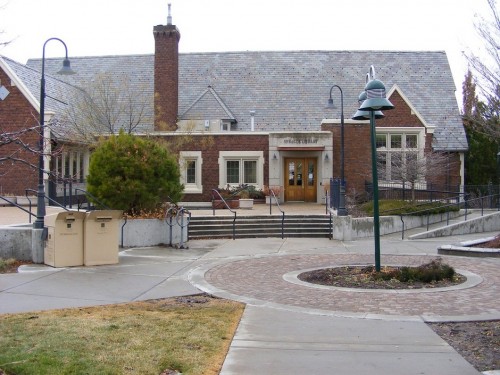By Kylee Hill
If the impressive building, with its sweeping Tudor-style architecture and gnarled, mature trees, looks out of place couched in the middle of the Sugar House shopping district, it’s for good reason: It’s been there since 1928, and though Sprague has undergone multiple expansions, it remains one of the best-preserved treasures in Salt Lake City. Its high ceilings, natural light, and towering stacks of books that earned it American Library Association’s “Most Beautiful Branch In America” in 1935.
Small compared to the downtown branch, it has a strong community presence. Dolly, a veteran 13-year librarian, says, “It really seems to be close to a lot of people’s hearts.” 
One such resident, Phillis Hough, has been visiting the Sprague branch for over 50 years. She moved to the area when she was six years old, just a year after the library was erected.
“The Sugar House area has changed so much,” she says. “None of my family even live here anymore, so it’s a good thing I have the library.”
Phillis visits once or twice a week, and is good friends with many of the librarians there. At 87, she’s still an avid reader.
“To me, reading is a joy,” she says.
The Sprague Library is open seven days a week, and this summer will be hosting a free music series every Thursday night. §
Visit the Sugar House Farmer’s
Market every Friday afternoons beginning July 8th at 4:00 PM. Located near the Obilisk at 1300 East 2100 South


